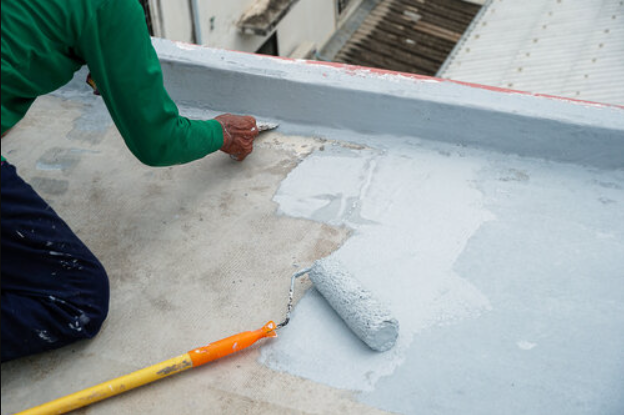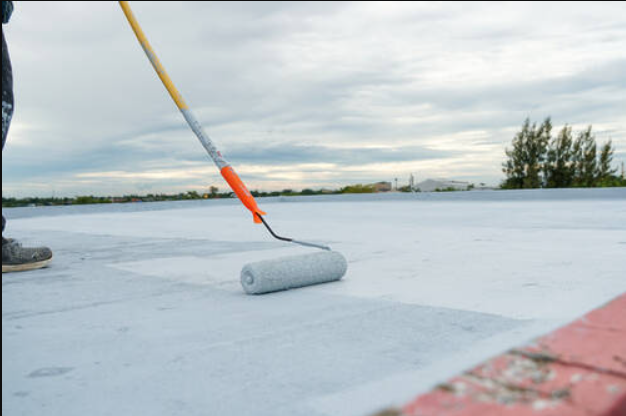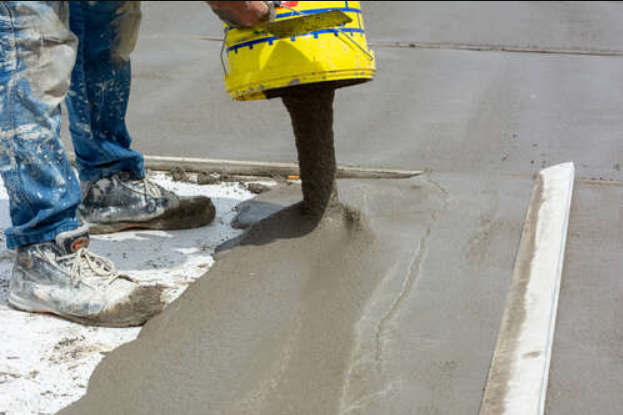Waterproof mortar can be divided into two categories: ready-mixed and dry mortar, according to its supply form (whether water has been added for mixing). The production processes of the two are also different.
In the past, mortars were mixed on construction sites using hand batching and free-fall mixers. This method, while requiring a small investment, is labor-intensive and manual, resembling a workshop-style production. The components of the mortar material are complex and difficult to achieve consistently, and the mixing is difficult to achieve fully. Therefore, the quality of the mortar product is unstable and easy to Segregate, has low strength, uneven thickness, and is easy to crack. On-site mixing, manual transportation, and use while producing have low production efficiency, single products, and easy pollution of the environment. It is a production method that will be gradually phased out. Therefore, it has become a development trend to transfer the mortar mixing at the construction site to the mortar manufacturing factory, which is also the origin of the development of commercial mortar.

The production process of ready-mixed mortar can be roughly summarized as follows: cement, mineral additives, and functional additives are stored in respective tanks, and sand needs to pass through screening equipment before entering.
The production process of ready-mixed mortar, a method that ensures efficiency and reliability, can be roughly summarized as follows: cement, mineral additives, and functional additives are stored in respective tanks, and sand needs to pass through screening equipment before entering. The raw materials of each component are then sent to the electronic scale for measurement by the conveying equipment (water is pumped), and then enter the fully automatic mixer controlled by the computer for mixing. The stirred mortar mixture undergoes workability After passing the inspection, the mortar transport truck will transport it to the construction site and put it into a non-absorbent sealed container for later use. Mortar is produced in a standardized factory, and its component and material control is automated and computerized. The product quality is stable and reliable. Ready-mixed mortar can be produced on the basis of the original ready-mixed concrete production enterprise, with low investment costs and transportation. Concrete transport trucks can be used, and special metal containers can be used for on-site storage. They can be used immediately and will not damage the environment. However, for projects that do not use a large amount of mortar, the use of ready-mixed mortar also has certain limitations, because the storage time of ready-mixed mortar at the construction site cannot be too long, and it is prone to Segregation, and production and supply must be reserved.
Dry mortar is precisely formulated in the factory. Compared with mortar products prepared by traditional processes, it has good quality, high production efficiency, green and environmentally friendly technology, multiple functional effects, excellent product performance, and civilized construction. The production process of dry mortar is as follows: First, sand pretreatment is carried out. Sand pretreatment can be divided into crushed sand treatment and river sand treatment. The crushing treatment process first transports coarse materials from the sand mine, then crushes, dries, and grinds them. , screening, and storage; the processing process of river sand is drying, screening, and storage; some qualified mortar manufacturers can directly purchase finished sand. The processed sand, cementitious materials, fillers, and additives are stored in their respective storage silos. After being measured by an electronic scale, they are sent to the mixer for mixing, and then the automatic packaging machine is used according to the set quality. Measure and deliver to the construction site in packaged or bulk form for use. Mortar production equipment related to the use of dry mortar includes bulk transportation systems (such as silos), dry mortar automatic mixing mechanical systems, and wet mortar mechanical coating (spraying) equipment. Dry mortar can be modified with synthetic polymers (redispersible polymer powder) and special additives (such as cellulose ether) to improve product quality and meet the requirements of the modern construction industry.

Application potential of one-component polymer-modified waterproof mortar
1. The importance of waterproofing function to buildings
The detrimental effects of moisture on concrete and masonry structures cannot be overstated. The presence and migration of moisture are often key factors leading to undesirable changes in their properties. Moisture, acting as a medium for transferring soluble components within structures, can significantly impair the performance of concrete and masonry structures. For instance, carbonization of concrete and mortar, corrosion of steel bars, freeze-thaw damage, and mold growth in walls are all consequences of water presence and migration.
Water from the outside can enter the building in many ways and adversely affect the building. For example, moisture can rise from the foundation of a building underground through capillary tension, causing moisture in the basement or ground floor of the building; the rising moisture may also bring salt to the upper wall, and the water evaporates to form salt. Crystallization is a process that can occur in cycles, causing a decrease in the durability of the building. External moisture can also enter the side walls buried in the soil through the soil. The salt present in the structure may also absorb external moisture through hygroscopicity, causing the moisture content of the wall to increase. In addition, condensation can also cause water vapor in contact with the building surface to become condensed water and enter the wall; rain and splash water can also directly penetrate the building.
2. Development potential of single-component polymer-modified waterproof mortar
The process of making a building waterproof typically involves two main aspects. The first is to ensure the concrete structure is self-waterproof, which is achieved by preparing the concrete with a waterproof function. This can be done by adding an expansion agent or a waterproofing agent. The second aspect is to use waterproof materials for surface and joint treatment. This can include using polymer-modified asphalt, synthetic polymer waterproofing membranes, flexible cement-based waterproof coatings, waterproof sealing materials, rigid cement-based mortars, and leak-stopping materials. Among these, polymer-modified cement-based waterproofing materials are widely used. These materials use two cementing material systems: inorganic cementing materials like cement bind the aggregates together to form a rigid skeleton, while organic cementing materials like redispersible rubber powder impart cohesion and dynamic behavior to the rigid skeleton after film formation, and enhance bonding properties to difficult-to-bond substrates.

In producing cement-based polymer-modified waterproofing materials, people are most familiar with using polymer emulsion to modify the mortar to complete the treatment of waterproof parts. Synthetic polymer emulsions have been used in mortar products since the 1930s. Mortars modified in this way are called two-component systems (mineral adhesive powder in bags + second component liquid polymer in containers physical adhesive). However, in practical applications, many problems arise when using these two-component systems on construction sites. The main difficulty is to control the amount of polymer emulsion accurately added. This error can occur due to a lack of knowledge and experience or even done intentionally to reduce costs. However, it must be noted that a polymer emulsion dosage that is too high, exceptionally too low, will cause damage to the related structure. In addition, the packaging cost of two-component products is relatively high, and wind during loading, unloading, transportation, and storage can significantly change the characteristics and technical performance of the mortar, making its adhesion, flexibility, and durability unsatisfactory, resulting in greater risks. Safety handling issues and liquid emulsions may suffer from freezing or microbial erosion and deterioration. The construction operation of two-component mortar is more challenging than single-component mortar, especially at construction sites with harsh conditions. The latter can be used by adding water and stirring, which is obviously much more convenient and efficient.
As a solution to the challenges posed by polymer emulsions in modifying mortars, the demand for powdered polymers surged in Western countries in the 1960s. This led to the development and production of single-component dry-mix mortar products, which in turn, spurred the production of redispersible rubber powder. The use of this product in single-component dry-mix mortar offers several advantages over two-component systems. It simplifies construction operations, makes packaging, storage, and transportation more convenient, and is more environmentally friendly. Most importantly, it provides an excellent guarantee of the safety and durability of the mortar in use.




